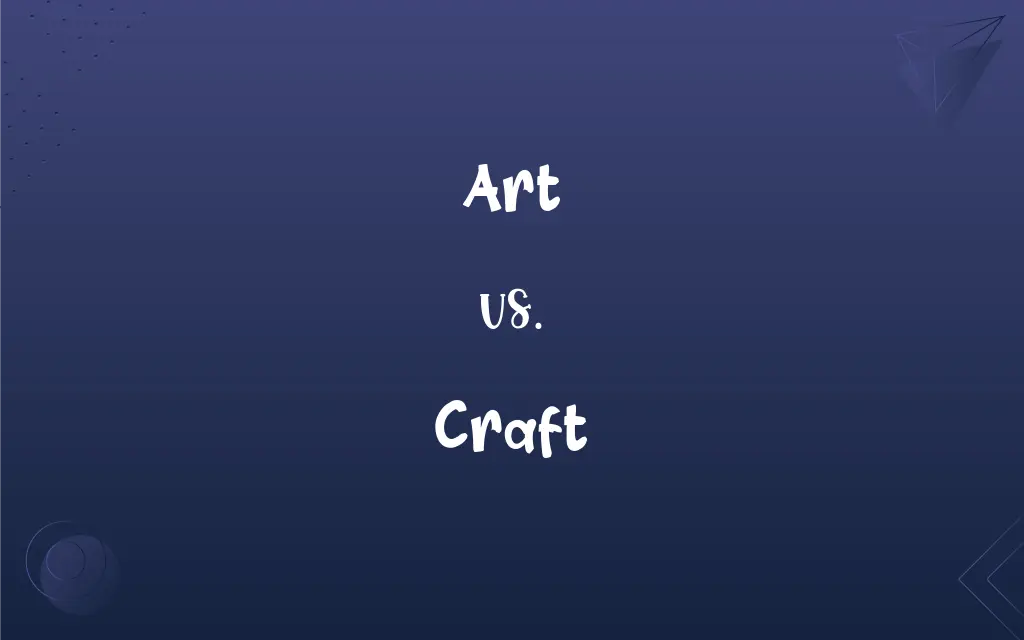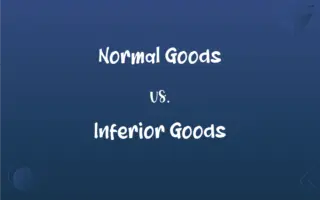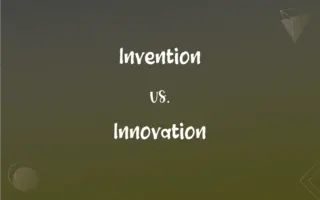Art vs. Craft: What's the Difference?
Edited by Aimie Carlson || By Harlon Moss || Updated on October 24, 2023
Art is the expression of creativity or imagination, while craft emphasizes skilled making or technique.

Key Differences
Art, in its essence, revolves around the realm of creativity and imagination. It is often seen as the spontaneous flow of emotions and thoughts turned into a visual, auditory, or performance medium. Craft, on the other hand, leans more towards the technical aspect, emphasizing skill, technique, and the method involved in creating something.
Both art and craft are essential for human expression and culture. While art often seeks to convey a message, invoke a feeling, or represent abstract ideas, craft is more about precision, intricacy, and finesse in the act of making. An artist may prioritize the emotional impact of their work, while a craftsman might place emphasis on the mastery of their technique.
It's worth noting that the boundary between art and craft is not always clear-cut. There are many instances where the two intertwine, and the creation embodies both the spontaneous spirit of art and the meticulous nature of craft. This fusion enriches the diversity and depth of human creations.
Art often challenges norms, provokes thought, and encourages introspection. It allows for subjective interpretation, giving viewers or listeners a chance to derive their own meanings. Craft, while it can be artistic, is often more objective, valuing functionality, durability, or the mastery of a particular skill or technique.
Comparison Chart
Definition
Expression of creativity or imagination.
Emphasizes skilled making or technique.
ADVERTISEMENT
Focus
Conveys emotions, ideas, or messages.
Prioritizes technique and functionality.
Boundaries
Often abstract and open to interpretation.
More defined and precise.
Value
Often prioritizes emotional impact.
Values mastery of a particular skill.
Intersection
Can be fused with craft.
Can integrate artistic elements.
Art and Craft Definitions
Art
The application of skills to produce aesthetic value.
The art of calligraphy requires patience.
ADVERTISEMENT
Craft
A boat, ship, aircraft, or spacecraft.
We saw several crafts sailing on the lake.
Art
A skill at doing a specific thing, typically one acquired through practice.
The art of negotiation is crucial in business.
Craft
The quality of design and work shown in something made by hand.
The craft displayed in this pottery is outstanding.
Art
Works produced for their beauty and emotional power.
The art of the Renaissance period is truly breathtaking.
Craft
An activity involving skill and expertise in making things by hand.
She learned the craft of basket weaving.
Art
A form of human expression.
The gallery showcased contemporary art from various artists.
Craft
The members of a skilled profession.
The teaching craft requires dedication.
Art
Creative activity resulting in the production of paintings, drawings, or sculpture.
She's taking a class in visual art.
Craft
Skill or ability, especially in deceiving people.
He achieved his goals through craft and guile.
Art
The conscious use of the imagination in the production of objects intended to be contemplated or appreciated as beautiful, as in the arrangement of forms, sounds, or words.
Craft
Skill in doing or making something, as in the arts; proficiency.
FAQs
Is art always subjective?
While art often allows for subjective interpretation, it can also have universally recognized themes or messages.
Can craft incorporate elements of art?
Yes, craft can integrate artistic elements, blending skill with creativity.
What does art primarily focus on?
Art primarily focuses on the expression of creativity, emotions, or ideas.
Does craft always result in functional objects?
While craft often emphasizes functionality, it can also create purely decorative items.
Can craft be abstract like some forms of art?
While craft often emphasizes precision, it can incorporate abstract or artistic elements.
Are craft techniques consistent across cultures?
While certain techniques are universal, craft often reflects cultural traditions and local innovations.
Are all handmade items considered craft?
Many handmade items are considered craft, but the distinction often lies in the intent, technique, and functionality.
Can craft evoke emotions like art?
Yes, well-crafted items can evoke emotions, especially if they incorporate artistic elements.
How important is skill in craft?
Skill is crucial in craft, as it determines the quality, functionality, and aesthetics of the crafted item.
Can art be learned?
While natural talent plays a role, art techniques and expression can be learned and honed through practice.
Is modern technology blurring the lines between art and craft?
Modern technology, like digital design tools, can merge art and craft, blending creativity with technical skill.
Is every artist also a craftsman?
Not necessarily, though many artists employ craft techniques in their work.
How is the term "art" used beyond visual mediums?
"Art" can refer to skills in various fields, like "the art of conversation."
Can craft be self-taught?
Yes, many craftsmen learn their skills through practice and self-teaching, though formal training can also be beneficial.
Can art be functional like craft?
Yes, some art pieces, like functional sculptures, merge aesthetics with utility.
How do people typically experience art?
People experience art through observation, interpretation, emotional connection, and personal reflection.
How is craft different from art in its essence?
Craft emphasizes skilled making, technique, and functionality.
What's a common intersection between art and craft?
Many functional items, like pottery or jewelry, can blend the skilled technique of craft with the aesthetics of art.
What's a primary goal of art?
One primary goal of art is to convey messages, evoke emotions, or represent ideas.
Why is craftsmanship valued?
Craftsmanship is valued for its precision, skill, and the quality of the resulting item.
About Author
Written by
Harlon MossHarlon is a seasoned quality moderator and accomplished content writer for Difference Wiki. An alumnus of the prestigious University of California, he earned his degree in Computer Science. Leveraging his academic background, Harlon brings a meticulous and informed perspective to his work, ensuring content accuracy and excellence.
Edited by
Aimie CarlsonAimie Carlson, holding a master's degree in English literature, is a fervent English language enthusiast. She lends her writing talents to Difference Wiki, a prominent website that specializes in comparisons, offering readers insightful analyses that both captivate and inform.































































